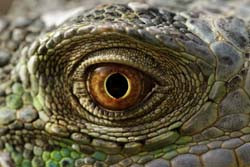Why dragons lose colour with age
The project, known as 'Reactive oxygen species and the evolution of life histories' (ROSELH), was one of the first attempts at studying two different species in both their natural setting and in the laboratory. The species studied were the Australian painted dragon and a zebra finch (a small songbird). The first was chosen due to its short lifespan, high reproductivity and distinct colouration (which diminishes with age). These characteristics allowed researchers to study the age-related effects of reproduction and immunity. They found an association and a positive correlation between colouration and free radical exposure. In addition, higher testosterone levels denoted an age-related colour loss in males; in females, reproduction increased metabolic activity, which in turn increases free radical levels. To further investigate the influence of free radicals during early development on physiological and behavioural changes in adulthood, researchers studied the zebra finch. Their aim was to confirm the formation of long-term free radical characteristics. Exactly how free radicals influence organism health and evolution is still in contention. However, this project has provided new insights into the role of oxidative stress in evolutionary biology, opening up new avenues for interdisciplinary research.
Keywords
Oxidative stress, free radicals, reactive oxygen species, evolution, colouration, reproduction







